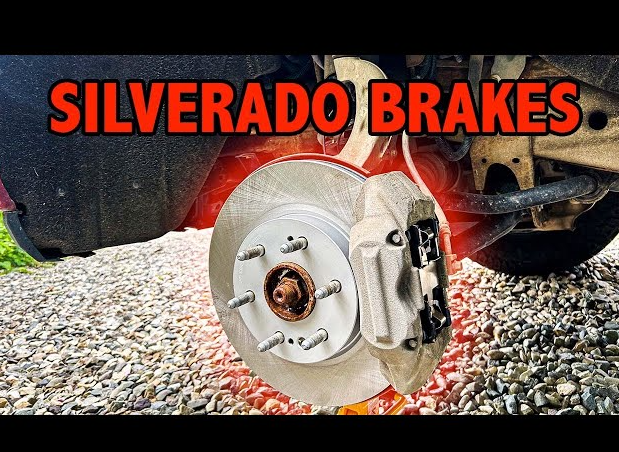Changing the brake pads and rotors on a Chevy Silverado is a relatively simple task that can be accomplished by the average do-it-yourself (DIY) car owner. However, before beginning the process, it’s important to note that the steps may vary slightly depending on the year, make, and model of your Silverado. Additionally, driving conditions, usage, and size and type of brake pad will also impact some of these steps.
In this article, we’ll outline what you can expect when changing the brake pads and rotors on a Chevy Silverado, as well as some tips to make the job as smooth and easy as possible.
1. Gather the Necessary Tools and Materials
Before you begin, you’ll need to gather the following:
- New brake pads and rotors: These are the new replacement parts that will be installed during the brake pad and rotor replacement process.
- Lug wrench: The lug wrench can loosen and remove the lug nuts that hold the wheel in place.
- Jack and jack stand: The jack will be used to lift the vehicle off the ground while the jack stands will support the vehicle once it has been lifted. This will allow you to safely roll under the entire vehicle.
- Wheel chocks: These are blocks that are placed behind or in front of the tires to keep the vehicle in place while it is jacked up. It ensures the vehicle stays stable and doesn’t roll away.
- Caliper tool (or a large C-clamp): The caliper tool compresses the caliper piston, which allows you to remove the caliper from the rotor. A large C-clamp can also be used as an alternative to compressing the caliper piston.
- Needle-nose pliers: These are used to remove the brake pads from the caliper.
- Flat-head screwdriver: The flat-head can gently pry the rotor loose in case it gets stuck on the hub.
- Brake cleaner: Used to clean the brake components and get rid of any dirt, rust, or debris from the hub before installing the new rotor.
- High-temperature brake grease: This is used to lubricate the back of the new brake pads and the caliper contact points to reduce noise and heat as well as prolong the life of the brake system.
Read More | BRICO IO: EMPOWERING DIY ENTHUSIASTS TO ACHIEVE HOME IMPROVEMENT SUCCESS
2. Loosen The Lug Nuts and Raise The Vehicle
Start by using the lug wrench to loosen the lug nuts. Next, use the jack to lift the vehicle and place the jack stands under the frame for support.
3. Check the Wheel Bearing
Over time, dust and debris from the brake pads can damage the wheel bearing. When replacing the brake pads, it’s a good idea to also check the condition of the wheel bearings, and consider replacing them if they show signs of wear.
4. Remove the Wheel and Caliper
Remove the lug nuts and take the wheel off. Next, use the caliper tool (or a large C-clamp) to compress the caliper piston.
This will allow you to remove the caliper from the rotor. Be careful not to damage the brake hose or the caliper itself, a problem that could compromise the entire brake system. Once the caliper is removed, use the needle-nose pliers to remove the brake pads.
5. Remove the Rotor
With the caliper and brake pads removed, the rotor should be able to come off the hub with ease. If the rotor is stuck, you may need to use a flat-head screwdriver to gently pry it loose.
Read More | THE MYTHICAL BEAUTY WHO IGNITED THE TROJAN WAR
6. Clean the Hub and Install the New Rotor
Before installing the new rotor, take a moment to clean the hub with brake cleaner to remove any dirt, rust, or debris. Then, place the new rotor on the hub and secure it in place.
7. Install the New Brake Pads and Caliper
Apply high-temperature brake grease to the back of the new brake pads and place them into the caliper.
Next, reattach the caliper to the rotor, being careful not to damage the brake hose or the caliper itself. Finally, use the caliper tool (or a large C-clamp) to compress the brake caliper piston and ensure the brake pads are securely in place.
8. Repeat the Process on The Remaining Wheels
Once you’ve completed the process on one wheel, repeat the steps on the remaining wheels.
9. Check On Anti-Rattle Clips
Certain Silverado models include anti-rattle clips that help prevent the brake pads from rattling and making noise when the vehicle is in motion. If they are damaged or broken, replace and align them with the brake pad.
Read More | HOW TO STRIKETHROUGH ON GOOGLE DOCS: ULTIMATE
GUIDE
10. Test Drive the Vehicle
After you have completed changing the brake pads and rotor on all four wheels, it is time to test drive the vehicle. Drive slowly in order to make sure the brakes are working properly and that the vehicle is stopping as expected.
In conclusion, changing the brake pads and rotors on a Chevy Silverado is a task that can easily be done on your own.
It is, however, a good idea to have a partner with you to help you out. Following the steps outlined above should help you get the job done with minimal hassle.
